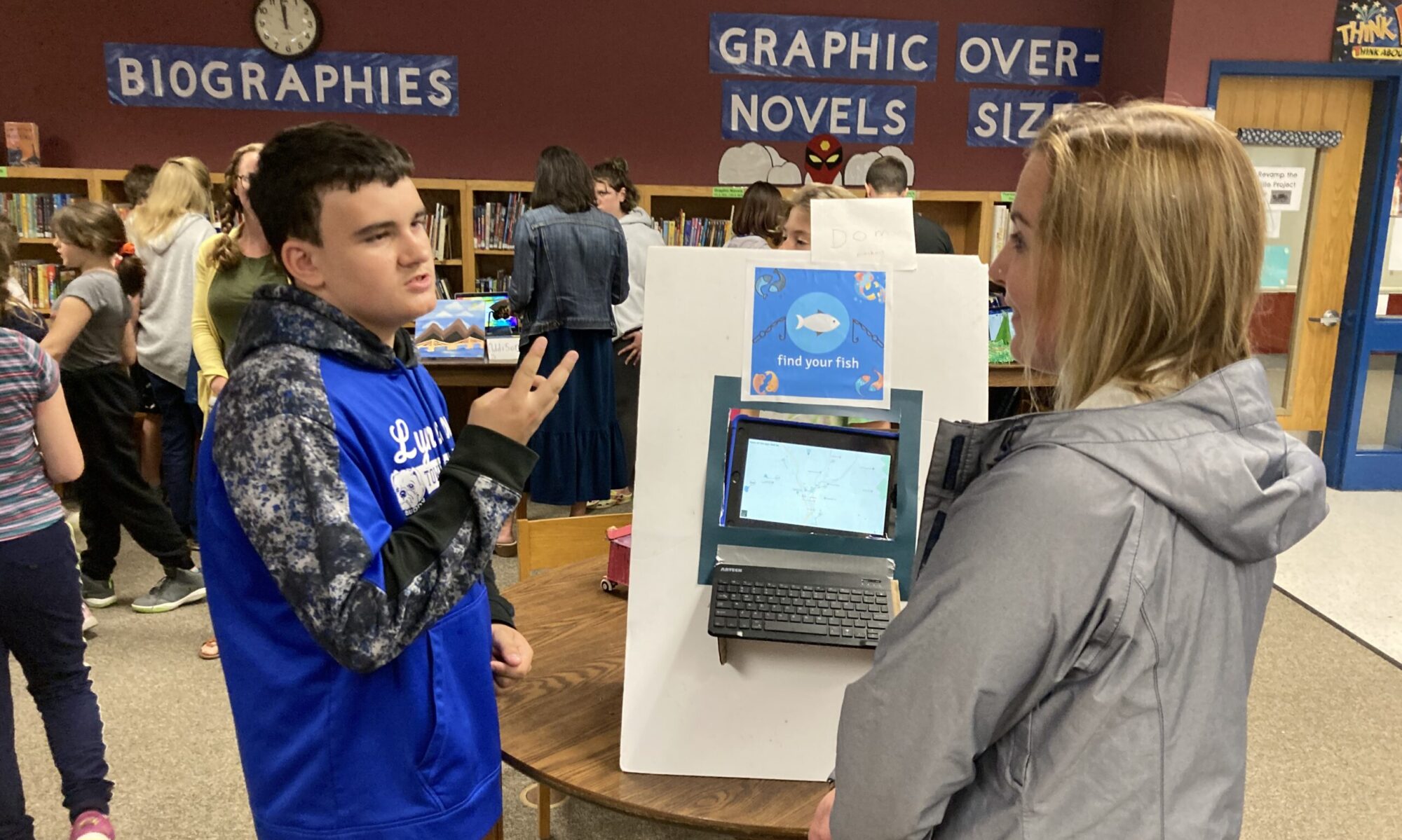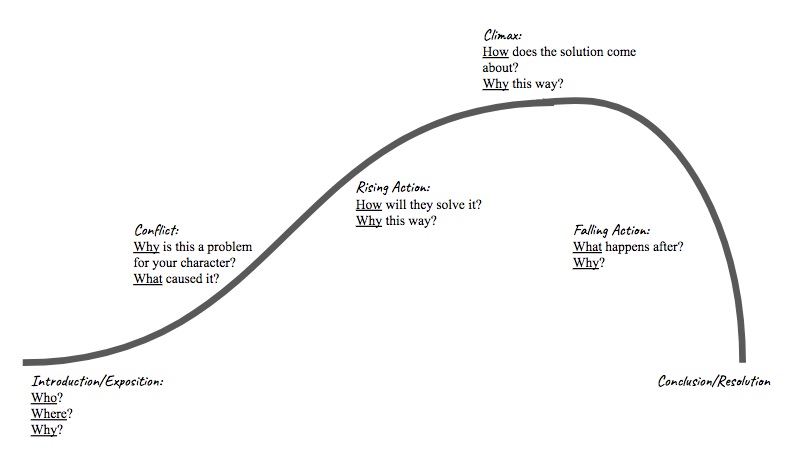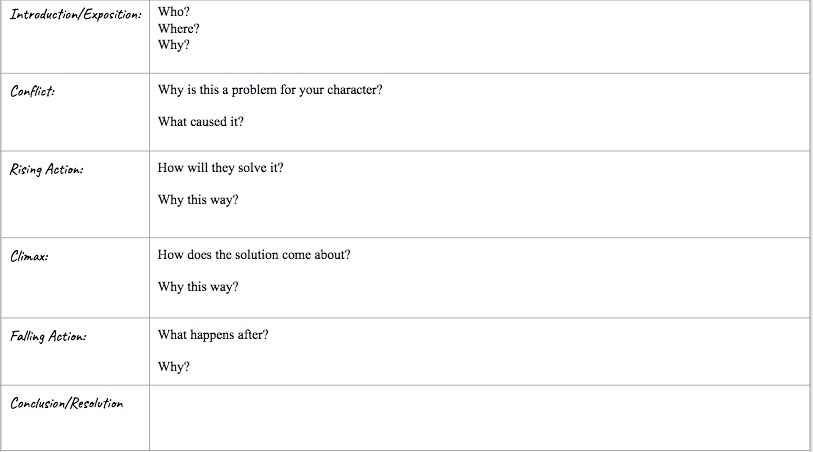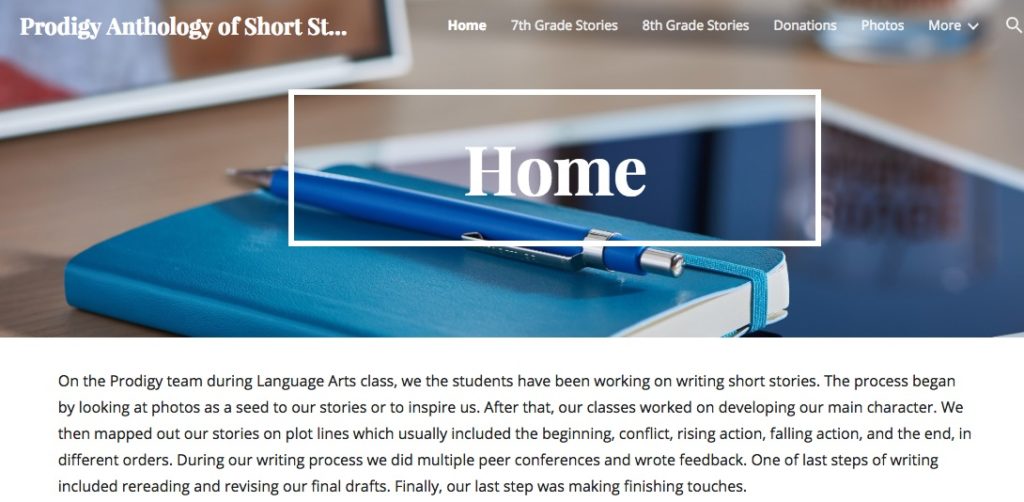7th and 8th graders take the initiative to share their stories with the world.
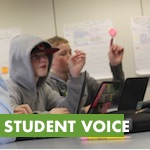 Ms. Cicchetti’s 7th and 8th grade language arts classes at Crossett Brook Middle School have been writing short stories for the last few weeks. Their writing experience has been a student-driven one and has been “Very enjoyable!” says Harper Haase, a 7th grader in Ms. Cicchetti’s class.
Ms. Cicchetti’s 7th and 8th grade language arts classes at Crossett Brook Middle School have been writing short stories for the last few weeks. Their writing experience has been a student-driven one and has been “Very enjoyable!” says Harper Haase, a 7th grader in Ms. Cicchetti’s class.
Everyone was very happy with getting to pick their own topic, do their own editing and revising, and not having teachers “guide” them along and take control.
Here’s how they began the process.
The first part in their writing process was creating a plot line and character concepts. They used these graphic organizers to make their plot lines:
They also watched videos like this one to get inspiration.
![Diana Gabaldon shows how she crafts a sentence [Animated]](https://i.ytimg.com/vi/CbJ1Hn55nOw/maxresdefault.jpg)
Each student worked on their own ideas, trying to compile a driving story idea.
The next part in the writing was getting started!
Throughout the writing process, the students watched Flocabulary videos on grammar, descriptive language, and more. After a student finished a first draft, they revised and then had a peer conference with someone.
This is what Ella Dice’s peer-led conference with Garrett Nelson was like.
But what was it like for students?
Cole Hill, Harper Haase, Olivia Sprague and Addey Lilley, all 7th graders, interviewed four classmates and asked some questions about their writing process in this unit.
How did you come up with your story plot?
Colin Deschamps answered “I brainstormed a lot of ideas then chose one that connected to me.” Many students had similar answers to that.
“I came up with this story plot by thinking about books I have read and kind of merging some of them together whilst making my own ideas up I guess.” says Olivia Sprague.
What was the hardest part of the writing process?
No students answered saying “We didn’t have a teacher to help us.” Instead they answered with responses like, “How I would get stuck in a part and I wouldn’t know how to fix it. With a little bit of thinking it would come to me, how to fix it.” Hailey Melton said this. Garrett Nelson says “For me it was probably paragraph structuring. That was definitely a struggle.”
What was the most enjoyable moment during your writing process?
Colin answered “I enjoyed writing the part in my story when the characters couldn’t get back to earth. It was really fun to write.” Garrett Nelson said “Just being able to get right into writing my story was the part I liked the most.”
The next part in these students’ writing process is publishing their stories online.
All of the writing pieces are going to be posted on a blog, so anyone can see and read them. Ms. Cicchetti, the students’ language arts teacher said that the students “Really took off with the project, they totally took the initiative to make the whole thing happen.” The students had a deadline of just a few weeks to get all the stories ready to be on display.
The first part in getting their stories online was splitting up the work.
“Since there is a lot of work to be done, the 8th graders thought that it would be a good idea to make separate groups to work on each part of the process,” says Addey Lilley. “Throughout the week there are four different groups that have language arts at different times. Each traveling class has the same four groups.”
She and other students went on to explain that the four groups are editing, formatting, advertising and PR and web design.
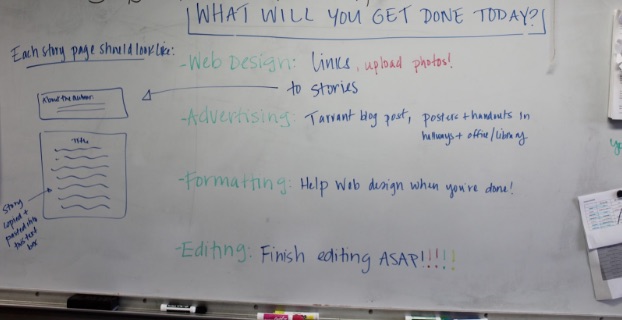
“Each group is in charge of different tasks to get the website ready. The editing is in charge of making sure all the stories have proper grammar, spelling, punctuation and things like that,” says Cassidy Berry. “The formatting is in charge of adding matching titles, text fonts, choosing which genre the story’s in and other things that make the stories match with others. Advertising gets the word out about the website and makes sure that people know how to get to it. Web design is making the actual site and adding the stories in.”
Here’s a look at the first stages for the website’s design:
In the back of the classroom there are four big pieces of paper, each one marked for a different group. After every class the groups marked:
- what they got done;
- what they are going to do the following week;
- and what they need other groups to finish for them.
“This helps us stay organized and keeps everyone moving forward.” Says Sadie Nordle.
To view all of the stories written by the students of Crossett Brook, click on this link. Or visit our website via the image below:
Written by Xavier Brookens, Harper Haase, Olivia Sprague, Addey Lilley and Cole Hill.
